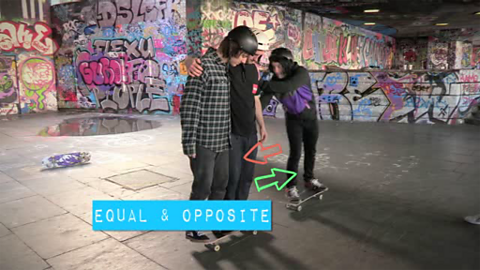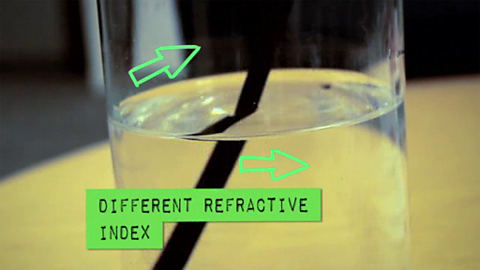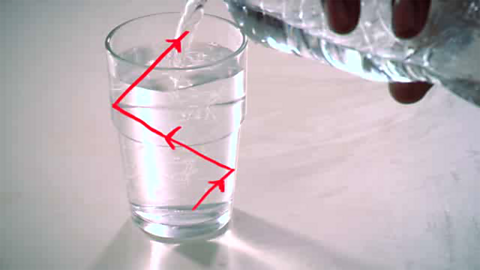JON CHASE:'Nuclear weapons, nuclear power stations 'and life-saving medical techniques, all use radioactivity.
JON CHASE:'But what is it? 'Elements hold the key.
JON CHASE:'Every element is defined by the number of particles in its nucleus. 'Some elements are stable but some elements, such as uranium, 'are unstable and decay by giving off particles or waves.
JON CHASE:'If the radioactivity involves particles leaving the nucleus, 'the atom will have a different number of particles 'remaining in the nucleus, 'and literally changes from one element to another.
JON CHASE:'The decay of these unstable elements is known as ionising radiation. 'There are three main types - alpha, beta or gamma.
JON CHASE:'Gamma radiation is pure energy, 'but alpha and beta radiation exist in forms of subatomic particles. 'In this case we are looking at the effect of alpha particles.
JON CHASE:'The particles are too small to see with the naked eye, 'but my main man Professor Seller, 'has set up a really cool way of seeing the effect of these particles. 'By using something called a cloud chamber.'
PROFESSOR SELLER:It’s a very, very clever device in which you have a little bit of alcohol in the bottom. As alpha particles are produced, they fly through that vapour.
JON CHASE:Those streaks are moving away from the source, and those streaks are caused by the alpha particles.
PROFESSOR SELLER:And they're a little bit like aircraft leaving a contrail behind. You can't see the plane, it's too small, but what you've got is that tell-tale trail of droplets which then disappears.
PROFESSOR SELLER:Beautiful.
JON CHASE:If it's emitting particles, it's running out of particles then, isn't it?
PROFESSOR SELLER:Atoms are actually breaking up.
JON CHASE:'In this case, the radioactive element that we are looking at, 'is something called americium. 'Americium is gradually decaying to become another element 'called neptunium. 'Neptuniam atoms are much more stable.
JON CHASE:'As more and more of the atoms become neptunium, 'the material becomes less and less radioactive, 'but it stays pretty much the same size.'
PROFESSOR SELLER:In the case of this material, it breaks down so that about half of it will be gone after 400 years. It sounds like a long time but you can still measure it.
PROFESSOR SELLER:And after another 400 years, you'll be down to a quarter, and after another 400 years, you'll be down to an eighth. And so it's decaying away gradually and that time is called the half-life.
JON CHASE:'One great use of half-life, is that we can use it to date things. 'We use the half-life of a naturally occurring radioactive form of carbon, 'to date cave paintings and fossils.
JON CHASE:'Giving us a chance to almost look back in time.'
Science presenter Jon Chase explains some of the uses of radioactivity and how unstable nuclei decay release ionising radiation.
He describes the nature of alpha, beta and gamma radiation, and observes the traces of alpha particles in a cloud chamber. He also explains the concept of half-life and carbon dating.
Teacher Notes
Students could investigate the uses of ionising radiation, such as smoke detectors and sterilisation.
If possible, you could demonstrate alpha, beta and gamma sources using a Geiger-Muller tube, showing how different types of radiation are capable of passing through different materials.
Pupils could explore decay chains and complete equations to show radioactive decay processes. They could also plot graphs of given data to calculate half-life.
Curriculum Notes
This short film will be relevant for teaching physics and science in general at KS3 and KS4 in England, Wales and Northern Ireland and National 4/5 in Scotland, and Cambridge IGCSE Physics
More from Physics Bites:
A demonstration of friction. video
Jon Chase explains friction.

Falling bodies. video
Jon Chase describes Aristotle’s and Galileo’s theories about falling bodies.

Newton's Third Law. video
Science presenter Jon Chase explains Newton’s third law.

Refraction of light. video
Jon Chase explains the refraction of light.

Total internal reflection. video
Jon Chase explains total internal reflection.
